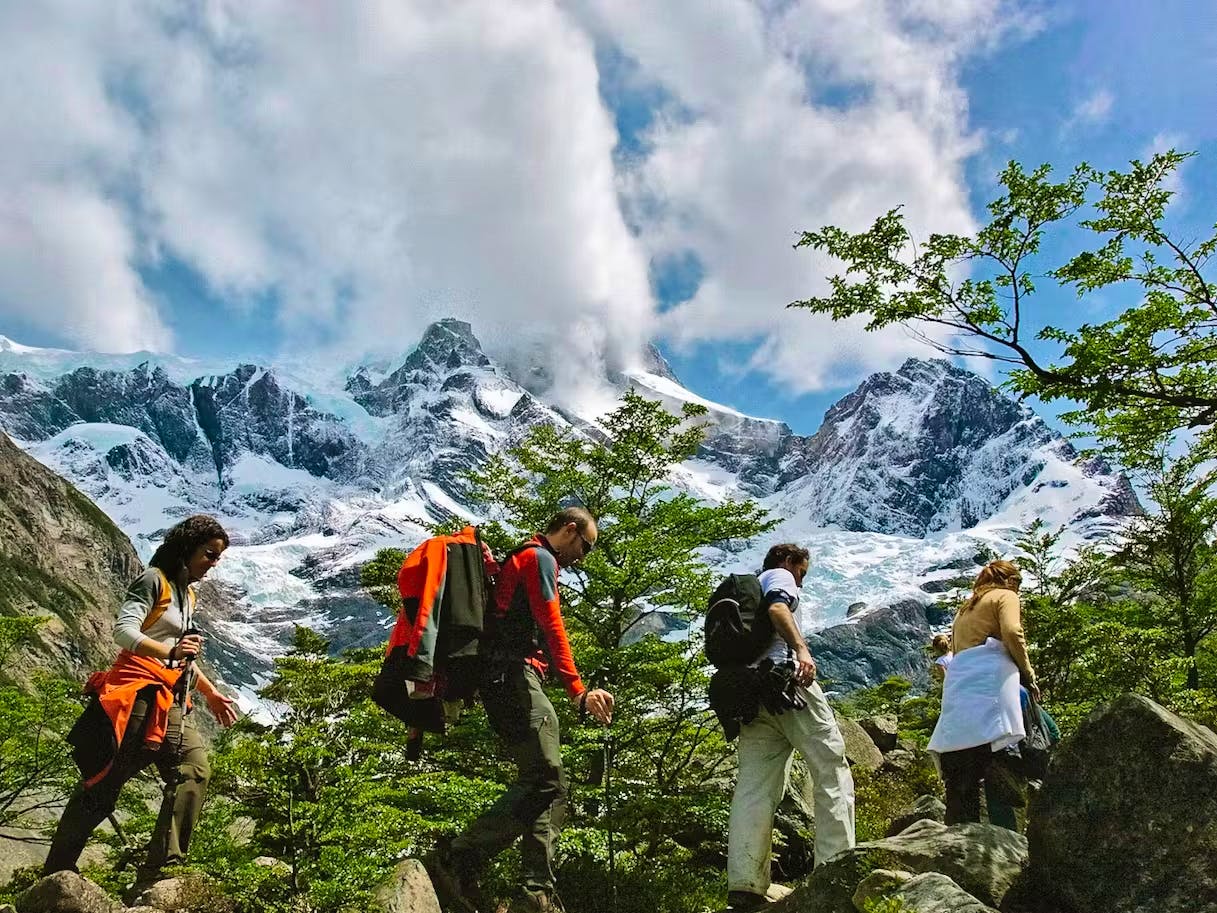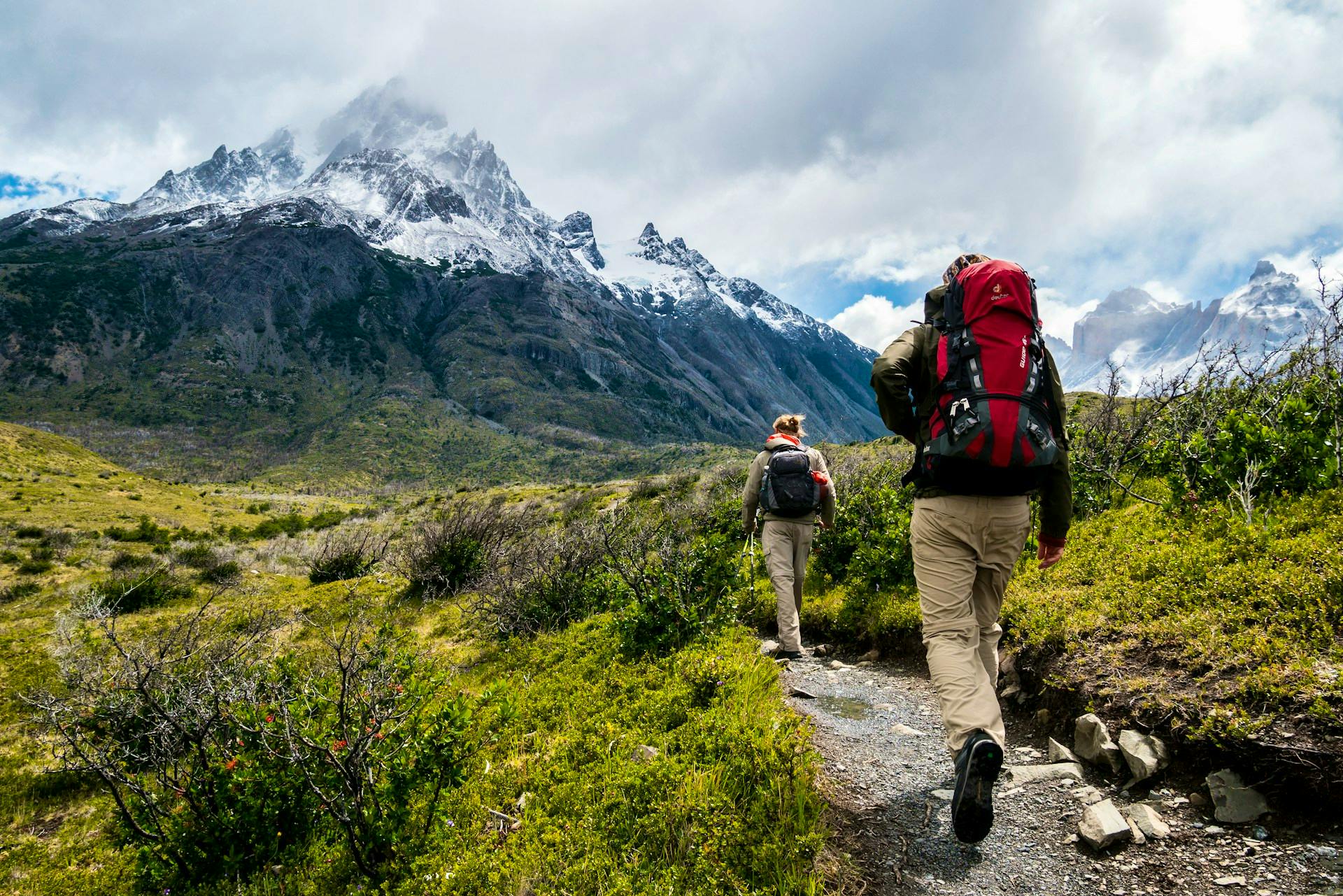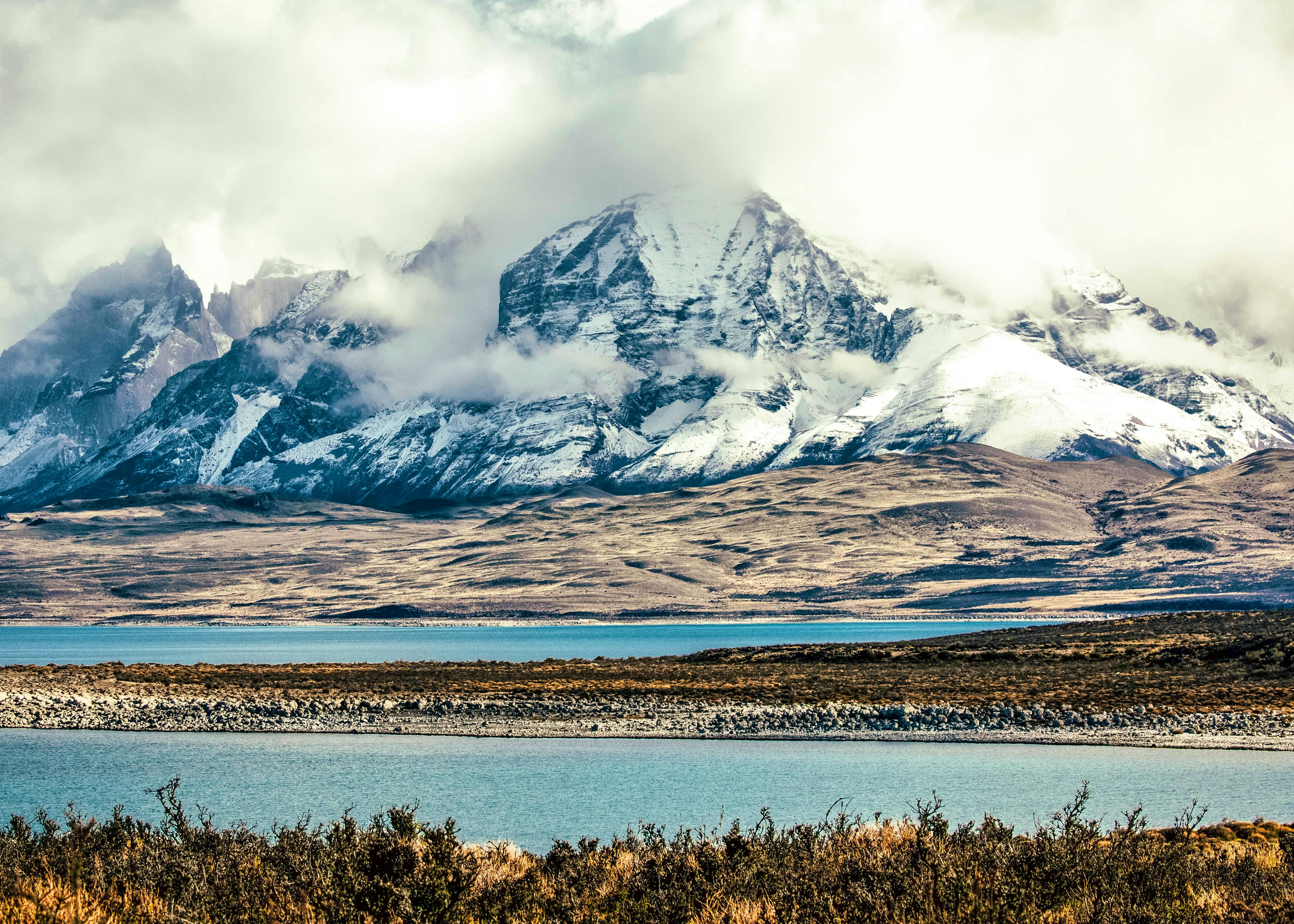If you're looking for the best places to go hiking in South America, then
Patagonia should sit high on your list. It is a beautiful region in Chile and
Argentina, and you can hike amazing sections of the Andes mountain range.
Patagonia offers everything a hiker wants - from mountains, glaciers, beautiful lakes, fjords, steppes, and so much more. You will love the views, the adventure, and the local culture.
Before you start hiking, let's tell you all you need to know about hiking in Patagonia.
Hiking in Patagonia is an extraordinary experience that offers breathtaking views and the opportunity to explore one of the world's most untouched natural landscapes. Here's why it's worth considering:
Diverse landscapes: Patagonia encompasses a variety of terrains, from vast ice fields and pristine glaciers to rugged mountain peaks and lush forests. Every hike is a unique experience, whether you're trekking through the iconic Torres del Paine in Chile or exploring the striking Mount Fitz Roy in Argentina.
Accessibility for all levels: The trails suit novices and experienced hikers. Whether you're looking for a challenging trek like the O Circuit in Torres del Paine or shorter, more accessible Patagonia day hikes like those around El Chaltén, there's something for everyone.
Stunning natural beauty: Patagonia is renowned for its dramatic scenery, including the towering granite peaks of the Paine Massif, the remote wilderness of the Southern Patagonian Ice Field, and the vibrant turquoise waters of glacial lakes.
Unique wildlife: The area is home to diverse fauna, including birdlife (don't miss the beautiful woodpeckers and waterbirds along water bodies), shaggy guanacos, and Andean condors. On a good (and scary) day, you might even meet some foxes, the Huemel, and a Puma!
Cultural experience: A Patagonia trek allows cultural immersion, from meeting local gauchos to exploring small Patagonian towns with rich histories.
Sustainable travel: Many parts of Patagonia are protected areas, and by visiting, you contribute to conservation efforts. However, you want to engage with responsible tour operators and adhere to the Leave No Trace principles to ensure these stunning landscapes remain intact for future generations.
You can literally plan a hike in a jiffy when in Patagonia. There are numerous well-marked paths in different areas, making it easy to plan a unique day hike in the region (kudos to the Chilean and Argentinian park authorities who keep the trails accessible and safe!)
However, we recommend trying the three main trails when you want a multi-day hike. These are:
Location: Torres del Paine National Park, Chile
Duration: Typically 4-5 days
Distance: Approximately 70-80 kilometers
Highlights: Grey Glacier, French Valley, Torres del Paine
The W Trek (or Torres Del Paine W Trek) in Torres del Paine is arguably the most iconic in Southern Patagonia, attracting hikers worldwide.
It is named for its W-shaped route connecting the Grey Glacier, French Valley, and Torres del Paine. Over 4-5 days, you trek a diverse landscape featuring turquoise lakes, towering mountains, and expansive glaciers.
The trek offers varied difficulty, with some challenging ascents to spectacular viewpoints, notably the base of the Paine towers, which reward you with breathtaking views at sunrise.
The route is well-marked, and you can navigate it independently, though many opt for guided tours which include basic accommodations in refugios or campsites along the trail.
Location: Los Glaciares National Park, Argentina
Distance: Varies, but key routes average 20-30 kilometers
Highlights: Mount Fitz Roy, Laguna de los Tres
The Fitz Roy Trek, situated in Argentina's Los Glaciares National Park has less crowds than the W Trek.
This best Patagonia Argentina hike centres around the majestic Mount Fitz Roy, known for its rugged spires that dominate the skyline. The most famous segment of this trek is the hike to Laguna de los Tres, where you will appreciate the full grandeur of Fitz Roy, especially at dawn when the peaks glow red and pink.
This trek is accessible from the small mountain town of El Chaltén, which is a gateway to various trails. The paths here are well-trodden but still offer a wild feel, with chances to spot Andean condors and other wildlife. You can choose from several loop options, with overnight stays in campsites that provide basic facilities.
The Fitz Roy trek is also the best trail for short hikes like the Cerro Castillo Glacier walk and the El Morado Glacier Trek

Latest Deals
Discover trips on sale on Skyhook. Book once-in-a-lifetime adventures at discounted prices.
Location: Torres del Paine National Park, Chile
Distance: Around 110 kilometers
Highlights: John Gardner Pass, Grey Glacier, remote parts of the park
The O Circuit (or Torres Del Paine Full Circuit Trek) is the W Trek's extended version and explores the Torres del Paine National Park comprehensively.
This Chilean route is more demanding and less travelled for a more solitary experience with nature. It encompasses the entire Paine Massif, with the challenging John Gardner Pass offering panoramic views of the Grey Glacier - the second-largest ice field outside the polar regions.
The circuit allows you to experience the vast wilderness of Patagonia, with its remote valleys and wild guanaco herds.
Due to its length and the variable Patagonian weather, this trek requires careful planning and preparation. You can still plan a self-sufficient hike, although there are several refugios and designated campsites along the route.
How to Plan Your Patagonia Hike
Patagonia offers distinct experiences based on its geographical diversity.
Argentine Patagonia is vast, with dry, rocky landscapes and the iconic Route 40, ideal if you want to combine road trips with hikes. It's home to famous treks around Fitz Roy and the base town of
El Chaltén, which offers direct access to many trails.
Meanwhile, Chilean Patagonia is known for its lush, verdant scenes and dramatic mountain peaks.
Torres del Paine is a standout for trekkers seeking well-organised trails and various accommodation options, from luxury lodges to traditional camping.
Here's how to plan a successful Patagonian hike:
1. Choosing the Trek: Season and Difficulty
The best time for trekking in Patagonia is during the Southern Hemisphere's summer, from December to February when you can enjoy warmer temperatures and longer days. However, these months also see higher tourist traffic.
For a quieter experience, consider the shoulder seasons of spring (September to November) and fall (March to April).
The trails in Patagonia range from short day hikes to challenging multi-day treks like the O Circuit in Torres del Paine, so you can choose based on your experience level and available time.
When trekking in Patagonia, you have various accommodation options depending on your budget and preference.
In Torres del Paine, for instance, you can choose from refugios, which are simple lodges that offer basic amenities and meals, or campsites that might be basic, but offer more comfort - like rented gear and pre-setup tents.
You want to book well in advance, especially during peak season.
Always purchase travel insurance that covers outdoor activities like hiking, considering the remoteness of Patagonian treks.
Weather in Patagonia is notorious for its unpredictability, with possible rapid changes, so also check forecasts regularly and prepare for all conditions.
4. Physical and Mental Preparation
Given the demanding nature of Patagonian trails, it's best to be in good physical shape. Engage in regular hiking or fitness routines well before your trip.
Mental preparation is also key, as the treks can be long, and weather conditions may test your resilience.
Your packing list should include waterproof clothing, multiple layers for varying temperatures, sturdy hiking boots, a water filter, and navigation tools like a GPS device or detailed maps.
Also, consider a portable charger, as access to electricity can be limited.
When planning a trek in Patagonia, Chile and Argentina, it's important to consider the permits and entry requirements for the national parks you plan to visit.
If you're coming from the US or UK, you don't need a visa to go to both countries.
In Chile, specifically for Torres del Paine National Park, you must book your campsites or refugios well in advance, especially during the peak season from December to March. The park has implemented a system to limit the number of trekkers, so securing your spot early is crucial. You might not need a permit for day hikes or shorter visits, but it's always best to check the latest regulations on the park’s official website or with local tour operators.
In Argentina, particularly in popular trekking destinations like Los Glaciares National Park, permits are not generally required for day hikes. However, you may need to register your trek at local ranger stations for longer treks or those involving camping. Like in Chile, booking accommodation in advance is highly recommended due to the high demand in peak seasons.
Both countries require park entry fees, which can usually be paid at the entrance of the parks or sometimes online in advance. Ensure you also check the specific rules for each park regarding camping, fire regulations, and environmental guidelines to adhere to local conservation efforts.
Ready to plan a Patagonia hike? Whether it's Patagonia Argentina trekking or a Patagonia Chile hike, you now have all the important info to plan a successful hike.
You can even start by booking a guided or self-guided trip with
Skyhook, and let the local guides handle your permits and accommodation needs!
Related Patagonia Articles




















